h2 hide
Mwen pare pou mwen aprann manje pifò manje ou manje yo.
Mwen bezwen èd ou pou mwen aprann manje byen epi FÈ li poukont mwen
Kisa
- Ban mwen ti pòsyon nan plizyè manje ki fasil pou mwen manje.
- Mwen bezwen manje ki mou, ki tann, epi ki imid tankou legim ki kuit ak fwi ki mou.
- Mwen toujou renmen vin nan tete a. Men, se pa pwoblèm si w ban mwen lèt manman ou tire nan yon gode tou!
Kijan
- Ban mwen manje nan yon ti asyèt oswa bòl.
- Mwen vle deside si mwen ap itilize dwèt mwen oswa ti kiyè mwen an. Tanpri pran pasyans si mwen ap fè dezòd.
- Koupe manje mwen an fè l fè plizyè ti moso ki pa pi gwo pase zong pous ou.
Kilè
- 3 repa (manje maten, manje midi, manje aswè) ak 2 oswa 3 ti goute ap fè mwen byen anpil. An n manje chak jou nan menm lè a.
- Mwen senpman bezwen dlo ant repa yo ak ti goute yo. Konsa mwen ap grangou – men m p ap twò grangou – lè moman an rive pou m pran pwochen repa oswa ti goute a.
Ki kote
- Manje avèk mwen. Mwen bezwen èd ou epi mwen aprann anpil bagay lè fanmi an reyini ap manje ansanm. Moman nou pase ansanm nan espesyal. Mwen santi w renmen mwen anpil lè w okipe mwen.
- Kite mwen manje sou tab la avèk tout lòt moun yo. Mwen dwe an sekirite, m dwe chita, m dwe gen yon bagay ki kore m epi m dwe tache nan yon chèz ki wo.
- Men kèk egzanp ki montre aparans pòsyon repa ak ti goute a ka genyen nan asyèt mwen.
Men kèk egzanp ki montre aparans pòsyon repa ak ti goute a ka genyen nan asyèt ou.
Manje maten
h4 hide
Yon ka (¼) tas kiwi ki koupe an kib
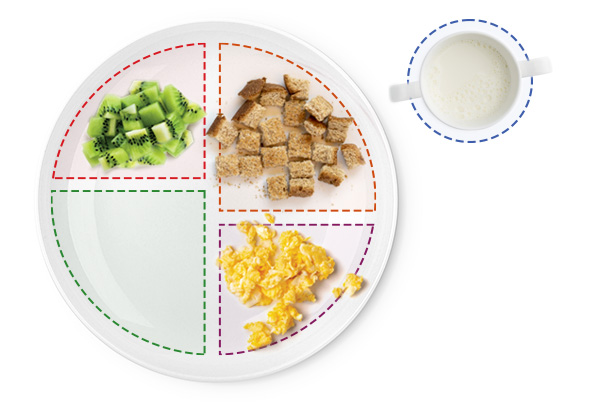
Demi (½) tranch pen konplè griye ki koupe
yon bò (½) ze ki kuit epi ki koupe
demi tas (½) lèt manman oswa lèt antye
Manje midi
h4 hide
Demi (½) fig mi mwayen ki koupe an tranch
demi (½) tas pwa vèt ki kuit epi rache
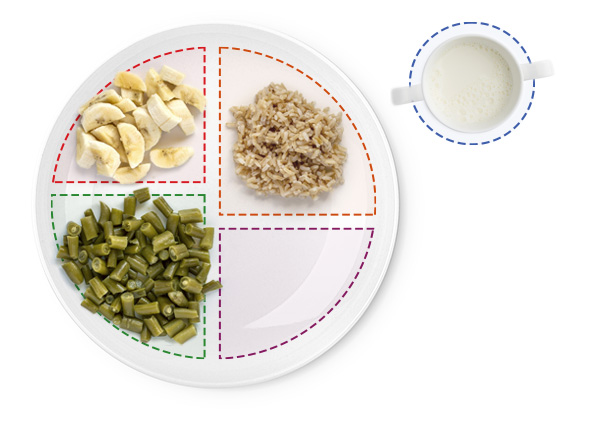
Yon ka (¼) tas diri konplè ki kuit
demi (½) tas lèt manman oswa lèt antye
Ti goute
h4 hide
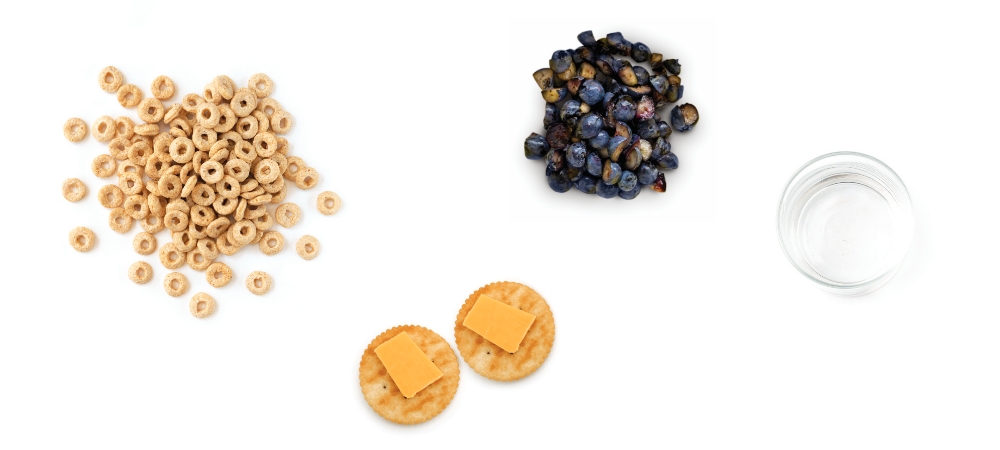
Demi (½) tas sereyal sèch
2 a 3 bonbon sèl konplè ki gen fwomaj
demi (½) tas mitiy ki rache
dlo ant repa ak ti goute yo
Manje aswè
h4 hide
Yon ka (¼) frèz ki koupe an kib
demi (½) tas pwa kraze
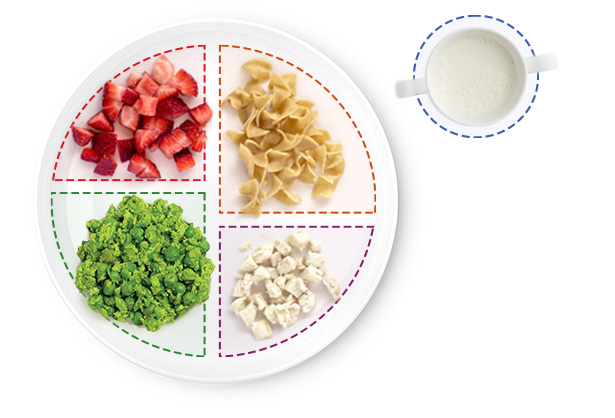
Yon ka (¼) tas pat alimantè konplè ki kuit
2 gwo kiyè vyann poul ki kuit nan fou epi ki rache
demi (½) tas lèt manman oswa lèt antye
Kantite yo Sijere Chak Jou pou Gwoup Manje yo
Demi (½) – 1 tas pa jou
Fwi ki kuit oswa ki mou epi ki kri.
Kraze, tranche, oswa rache.
Ofri m tout kalite koulè: wouj, jòn, jòn abriko, ble, ak vèt.
Detyè (2/3) – 1 tas pa jou
Legim ki kuit epi ki kraze, tranche, oswa rache.
Ofri m tout kalite koulè: vèt fonse, jòn abriko, wouj, jòn, ak mòv.
1 ons ¾ – 3 ons pa jou
Vyepti moso.
Pen konplè, tòtiya, diri, oswa makawoni.
Sereyal sèch oswa kuit.
1 ons ¾ – 3 ons pa jou
Vyepti moso.
Pen konplè, tòtiya, diri, oswa makawoni.
Sereyal sèch oswa kuit.
2 ons pa jou
Vyann, vyann bèt volay oswa pwason ki kuit epi ki rache.
Ze.
Pwa, oswa pwa frans ki kuit epi ki kraze.
Manba.
2 ons pa jou
Vyann, vyann bèt volay oswa pwason ki kuit epi ki rache.
Ze.
Pwa, oswa pwa frans ki kuit epi ki kraze.
Manba.
1 2/3 – 2 tas pa jou
Lèt manman (nan tete a oswa ki tire) oswa lèt antye.
Yogout.
Fwomaj.
1 2/3 – 2 tas pa jou
Lèt manman (nan tete a oswa ki tire) oswa lèt antye.
Yogout.
Fwomaj.
Gade sa mwen kapab fè!
- Mwen kapab bwè nan yon ti gode an plastik nan moman repa ak ti goute yo.
- Mwen ap aprann manje ak kiyè.
- Mwen renmen aprann mache avèk ou.
- Mwen ka konnen jan pou m di detwa mo. Tanpri fè lekti, pale, epi chante pou mwen pou m ka aprann plis bagay.
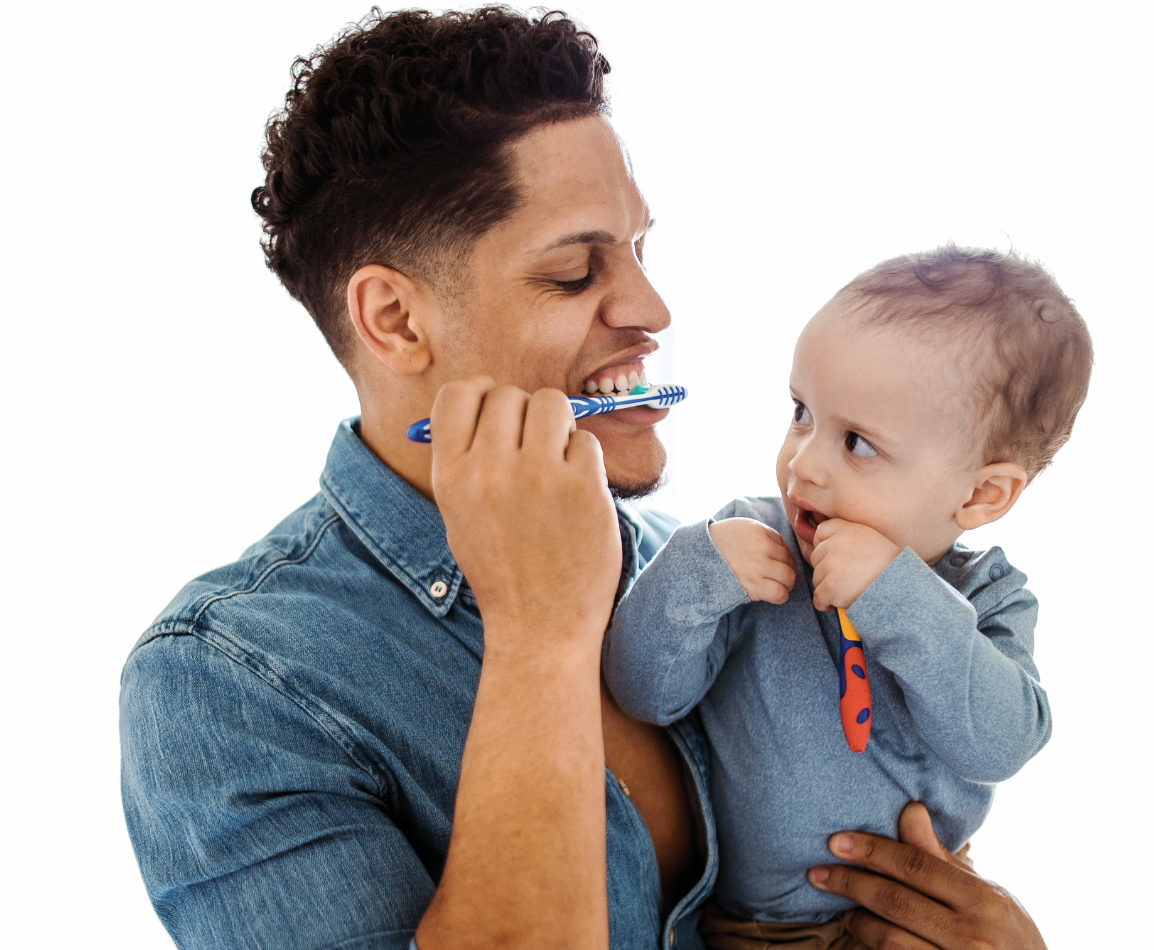
Pwoteje mwen epi kenbe mwen an sante.
Tanpri PINGA ou ban mwen manje ki ka trangle mwen tankou nwa antye, rezen antye, grenn, òtdòg, oswa sirèt ki di.
Fòk mwen fè tchèkòp epi pran vaksen pou m rete an sante. Mwen ta dwe al kay doktè lè m gen 12 mwa, 15 mwa, epi 18 mwa. Ale sou www.cdc.gov/vaccines/schedules pou wè ki lè mwen dwe pran vaksen.
Bwose dan mwen de (2) fwa pa jou avèk yon ti bwòsdan ki soup epi ak yon vyepti kal pat dantifris pou timoun, ki gwosè yon grenn diri. Pran yon randevou pou ale kay dantis avèk mwen.
Jwe avèk mwen pou ede m rete aktif. Si gen moman pou m devan ekran, limite l pou ka entèyaji avèk mwen.
Evite konsome pwodui ki fèt ak tabak oswa ki gen nikotin, alkòl, marigwana, ak lòt dwòg ilegal yo pou kenbe fanmi nou an sante epi pou pwoteje li. Pou w jwenn èd pou kite tabak oswa pwodui ki gen nikotin, ale sou www.quitnow.net. Pou w jwenn èd pou kite alkòl oswa lòt dwòg yo, ale sou www.findtreatment.gov. Nitrisyonis Special Supplemental Nutrition Program for Women, Infants and Children (WIC, Pwogram Nitrisyon Siplemantè Espesyal pou Fanm, Tibebe ak Timoun) ou a kapab ba w lòt resous tou.
Enstitisyon sa a ofri tout moun menm opòtinite.